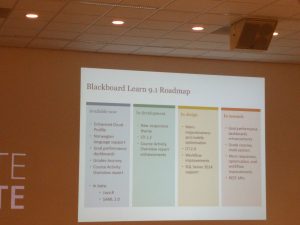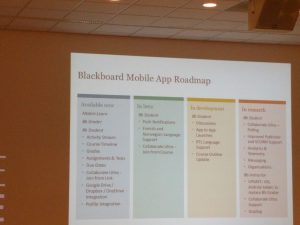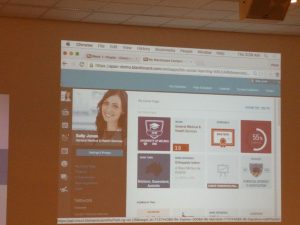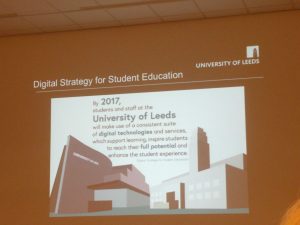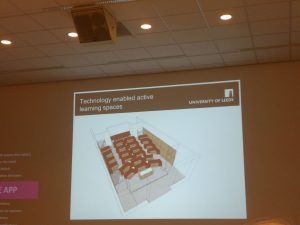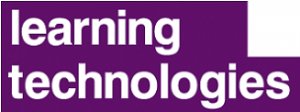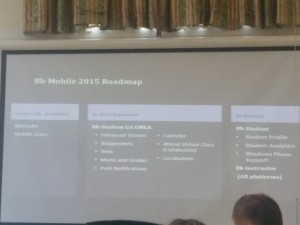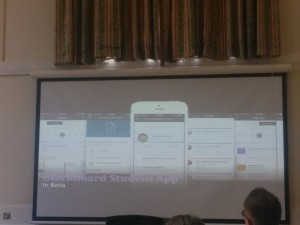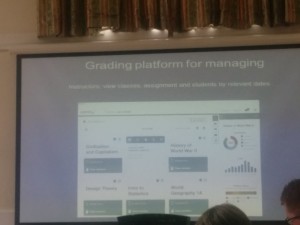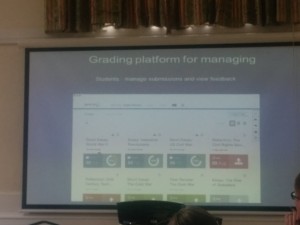Incorporating Virtual Reality (VR) into Online Courses
This is a short blog post on the potential of using virtual reality (VR) content in e-learning courses. I recently attended the Learning Technologies Summer Forum at Olympia in London. This was the second Learning Technologies event that I have attended this year, following the conference & exhibition that took place in January. Although I found the event slightly disappointing due to the lack of seminars, one area that stood out was the growing number of exhibitors demonstrating e-learning content through virtual reality headsets. Furthermore, the exhibitors from Kallidus managed to win over the crowd by giving away free Google Cardboard before their seminar entitled ‘Getting started with VR: myths, realities and practicalities’ which you can download from this page.
The key characteristic of VR is that the user can view 3D images that create a simulated environment. This immersive experience can allow a user to interact in a 3D world. The availability and quality of VR content has improved rapidly over the last couple of years and this is due in part to the mass (and cheap) production of Google Cardboard (https://vr.google.com/cardboard/) and a growing number of apps that it supports. By using Cardboard and a smartphone, you can now enter an immersive world that was previously only accessible via clunky and expensive headsets. So, how can VR be used effectively in online courses? During his presentation, Tim Drewitt from Kallidus suggested the following benefits;
- Simulate dangerous or risky situations within a safe controlled environment
- Offer accurate and realistic simulations to solve real-world problems
- Offer exploration of virtual scenarios as experience for real world scenarios
- See the world through someone else’s eyes
- Use visualisation to simplify complex concepts and theories
- Reduce the cognitive load and improve retention and recall
- Allow learning objectives to be measured through observation
- Cater for large numbers of learners in different locations
- Demonstrate learning innovation and a “wow” factor
In terms of applying VR to courses, you could find it really beneficial if creating content related to the following areas.
Dangerous Environment
VR could revolutionise online safety courses, particularly fire training. It is not advisable or practical to create a real fire for training purposes (obviously). Using a VR fire simulation would provide a visual imprint that you can’t really get from face to face training or from a picture embedded into an e-learning module. Furthermore, if you take a risk in the VR simulation, you will probably have a greater recognition of the consequences of your action than you would get from taking a fire safety quiz. G4S have created the following trailer for their Health & Safety training VR to give you an idea of what it could potentially look like.
Sense of Presence
VR could also be great tool for practising public speaking. For example, you could create an interview simulation for an online recruitment course. Alternatively, you could create a VR lecture theatre allowing the user to experience public speaking without the fear of having to do so in a real-life situation. Click on the example created by VRARlab below to get an idea of how this could look.
Induction/Tour
Users could potentially access a VR simulation that gives them access to a tour or induction. This could be particularly beneficial to new starters (staff and students) to help them get a sense of their environment before they arrive. In addition, it could also potentially benefit overseas students who may find it difficult to attend open days for logistical reasons. Kallidus have produced the following example of a VR tour of Cannon Street station.
Nonetheless, despite the potential benefits of using VR in online courses, there are a number of challenges that need to be considered. Although you can purchase Google Cardboard for around £10, it could be costly (in terms of both money and time) creating a VR simulation. A great deal of work would need to go into the planning stage and storyboards would need to be used. The Kallidus presentation also highlighted other potential barriers;
- Lack of knowledge of how to use VR
- Lack of cultural appetite, or scepticism from leaders
- Lack of suppliers/designers working in this area
- Possibility of motion sickness/disorientation for viewer
- How do you measure effectiveness
Overall, it is still too early to say if using VR in online courses is the next big thing or a ‘flash in the pan’. There are many potential benefits for adopting and embracing VR, particularly if you are trying to replicate a dangerous environment or situation. However, creating a VR simulation for an online course could be costly and time consuming. It will be interesting to see how VR continues to develop over the next couple of years.




